|
|
|
|
|
|
|
|
|
|
|
|
|
|
|
|
|
|
|
|
|
Knife makers
|
|
|
|
|
|
|
|
|
|
|
|
|
|
Stilettos and law
|
|
|
|
Miscellaneous
|
|
|
|
|
|
|
|
|
|
|
|
|
|
Terminology of Italian automatic stilettos
Classic stiletto - usually this term is referred to a automatic stiletto with swivel bolster or picklock locking mechanism.
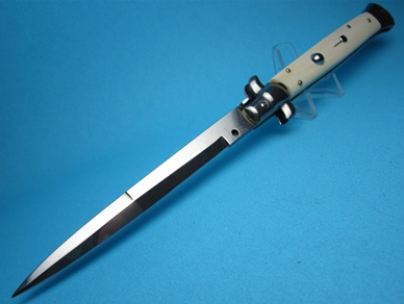
Bolster (Больстер) - decorative and reinforcing elements of the knife. There are Front bolster and Rear Bolster - Pommel. Besides, Front bolster can serve as mechanism, allowing to unlock blade - see Swivel bolster.
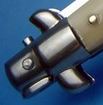
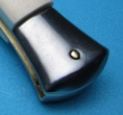
Cottedge industry - term for the current division of labor for the production of automatic knives in Maniago. This term means that the components, like blades, springs, bolsters and handles are made by various families. Knife-makers, such as Frank Beltrame and Angelo Campolin, who use those components for assembly of knives. This division of labor has its roots in Maniago in the first half of the 20th century, and it is still actual for present days.
Flatguard - stilettos with flat bolster, which were in production till the 1950s. Later, in the mid-1950s, was applied stamped steel bolsters, generally convex shape.
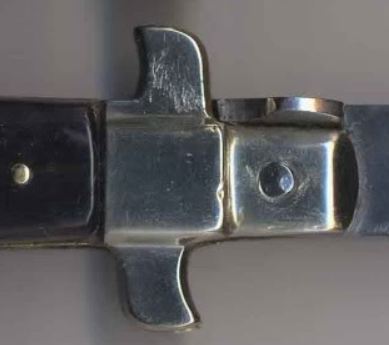
Humpback - type of automatic stilettos with lockback locking mechanism, but unlike conventional lockback to release the blade from the open position it is necessary to press the button (hump) on the upper edge of the handle.
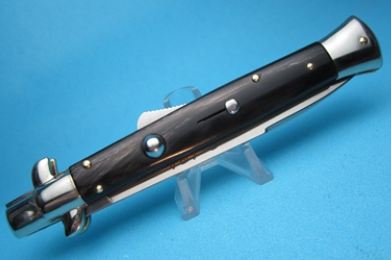
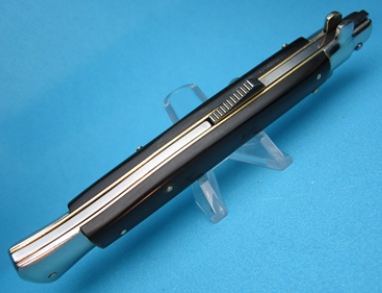
Leverlock (leverletto) - locking mechanism anв type of knife, when opening and fixing the blade in the open position occurs by means of lever lock.
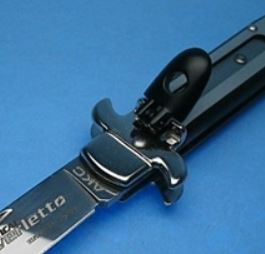
Locking tab (locking plate) - metal plate with drilled hole therein. Serves to fix the blade in the open position due to the pins on the blade that enters the hole in the plate.
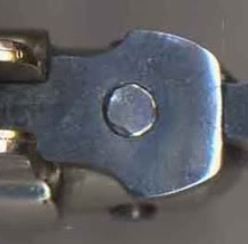
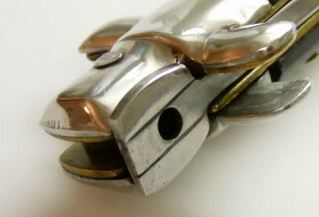
Lockback - locking mechanism, where fixing of blade occurs by means of rocking longitudinal metal plate. To release the blade from the open position you should press on the edge of the plate (red) near the pommel (rear bolster)
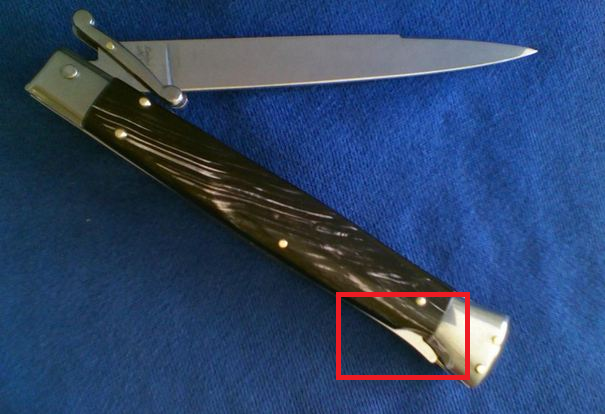
Picklock - locking mechanism and type of automatic stiletto, where
запирающая конструкция и тип автоматических стилетов, where fixing blade in the open position occurs by means of a flat metal plate (locking tab), whith drilled hole. In this drilled hole inserts the pin of the blade, so the blade is fixed in the open position. To release the blade from the open position it is necessary to lift manually the locking metal plate (locking tab). Most of the Italian automatic stilettos until 1962 were the type of picklock, then they were replaced with an improved mechanism of swivel bolster.
Swivel bolster (bolster release) - a mechanism to lift the latch lock (locking tab) and release the blade. Before the advent of the swivel bolster locking tab was raised manually, such a design called Picklock. Swivel bolster appeared in the late 1950s and in the 1960s have become almost standard for the Italian automatic stiletto.
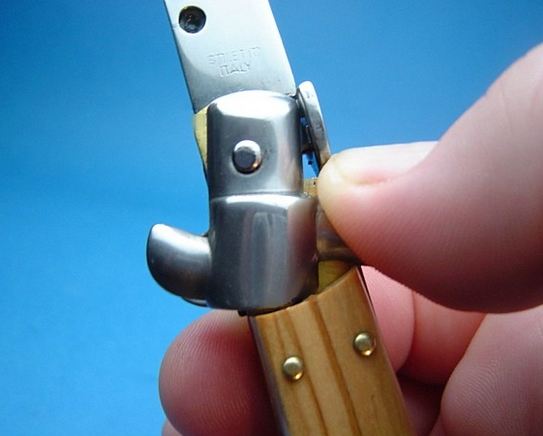
Swinguard - stilettos with folding guard and locking mechanism of lockback. Folding guard is more decorative in nature, than protecting and consists of two metal plates attached to the pin on the blade. In the folded position guards is located along the handle, and at the opening of the knife guard turn on a pin and is located across the hilt. This type of knife for the first time presented by Jndiana Cutlery in Italy in the 1960s.
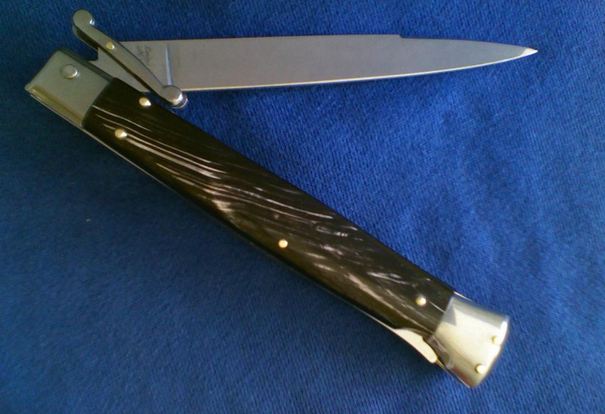
Switchblade - (automatic knife, pushbutton knife, flick knife, flick blade) This word first appeared in the nineteenth century, as a variant of the phrase "knife switch" - (a knife to be switched literally). Most dictionaries including those devoted to slang, suggest that the word first appeared in 1946, but did not explain the etymology of the word and do not provide any information about the original from which it came.
|
|
|